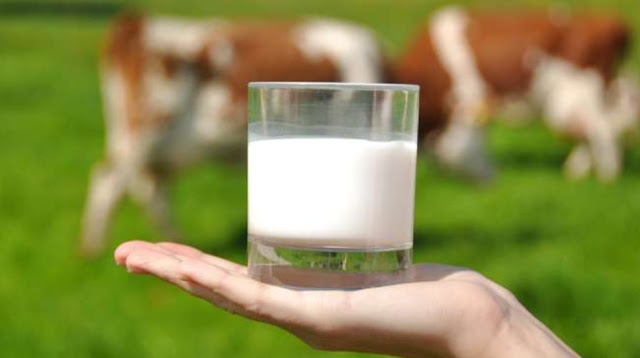Should you drink raw milk?
In America, health authorities warn against consuming raw milk because of bird flu. In many countries, there are strict regulations regarding the distribution of raw milk. However, some people consider raw milk to be very healthy.
Cleaner skin, strengthened immune system, better digestion. Raw milk from cows, sheep or goats is often touted as a superfood on social networks. In contrast to heated milk, this milk must contain more nutrients, among other things. Therefore, some influencers advise pregnant women to drink raw milk - contrary to all medical recommendations.
Is raw milk actually that much healthier than “conventional” milk?
What exactly is raw milk?
Milk sold in supermarkets is usually heat treated to kill pathogens. This also makes breast milk last longer. Shelf life varies depending on the type of heating process. The milk is heated to about 75 degrees Celsius for 15 to 30 seconds. This kills pathogenic microorganisms and the milk can last up to ten days. By increasing the temperature, microfiltration or double sterilization, fresh milk can be stored for up to three weeks. UHT milk is heated to 150 degrees Celsius for a few seconds. This means that almost all microorganisms die, which is why milk can be stored for months even if it is unopened and not refrigerated. With sterilized milk, the heating phase is much longer and can last up to 30 minutes. This means that all germs die and the milk lasts for at least six months.
How many nutrients are lost?
However, it is precisely this heating process that some websites and influencers see as an argument for raw milk - as important nutrients in milk are also lost through heating. However, this is generally not true, says Christina Hoffmann, a dietitian teacher at the University Medical Center at Johannes Gutenberg University Mainz. “The difference compared to pasteurized milk is very small,” says Hoffmann. Important ingredients such as calcium and other minerals are contained in equal amounts. This also applies to fat-soluble vitamins such as A, D and E. The protein content is also the same, as written by the FDA, US Food and Drug Administration with reference to research. for example B1, B2 and B6, about five to ten percent is lost through heating – even more in long-life milk and sterilized milk, says Hoffmann. The same goes for folic acid. In the case of vitamin C, losses due to heating are somewhat higher. According to the FDA, raw milk does not contain bacteria (probiotics) that are beneficial for digestive health, as it is often said that raw milk is much healthier than, for example, pasteurized milk, according to Hoffmann. Improving the immune system through consuming raw milk has also not been scientifically proven.
Raw milk can prevent allergies. The proven benefits of raw milk are reducing the risk of asthma, hay fever and allergies. For example, children who grow up in rural areas and consume raw milk are less likely to develop asthma than children who drink processed milk and grow up in cities. The higher content of omega-3-fatty acids in raw milk. It is assumed that they are converted into anti-inflammatory substances in the body. The fat content of raw milk is slightly higher than processed milk, which also affects the taste. "Of course it still depends on your genetic predisposition," says Hoffmann. “If a child's parents have a genetic predisposition to the disease, it is likely that the child will also contract the disease.” Raw milk is also not better tolerated by allergy sufferers than pasteurized milk.



